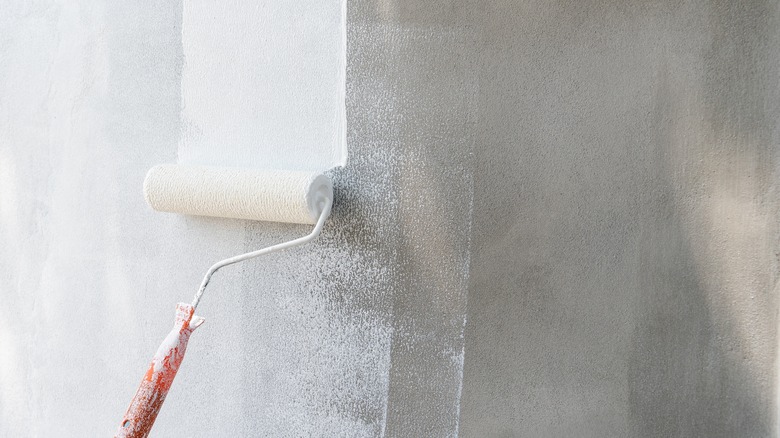What Really Happens If You Paint Without Using A Primer First
Though most high-quality paint on the market today has been developed to be able to be used without a separate priming product, primer is still an important part of many painting projects. While they look similar and are applied in the same way, paint and primer are very different, and depending on the specifics of your next painting project, you may need both in order to achieve a smooth, beautiful, and even finish. When applied before paint, primer acts as somewhat of a glue between the paint and the surface of the wall, helping the paint to adhere more easily.
Despite its importance in many painting scenarios, primer is not always necessary. Whether or not your painting project requires the use of primer beforehand is dependent on the surface texture and finish of the wall you are painting, as well as how drastic of a color change you're going for. In most cases, you will not need to apply primer before painting. While a couple of coats of high-quality paint sans any sort of primer should easily cover your walls without issue, there are a few exceptions.
When to use a primer before painting
If the surface of the wall you are painting is extremely porous, you will likely need to use a primer before going in with your desired paint color. Porous surfaces, if not properly primed beforehand, can absorb a lot of paint. This can result in an uneven finish, and force you to apply a lot more coats of paint than you normally would have to. Brand new drywall and wood surfaces are known to be extremely porous, so if you are painting a wall that has never been painted or painting over areas of wood paneling, it's best to use a primer beforehand.
If the wall that you are painting has any noticeable stains, you will also want to use primer first to help the paint more easily cover them and to prevent them from showing through the paint again in the future. It's also recommended to use primer first when you are painting over a very dark color with one that is much lighter. A primer will allow the new paint to better cancel out the old, and will prevent it from showing through. While it's possible to successfully paint over a dark, ultra-saturated color with a lighter one without using a primer, it will likely require many coats. Simply using a primer before going over the top of a dark wall with light paint can prevent you from wasting money on a lot of additional paint you don't need, and will save you the time of having to apply so many coats.

